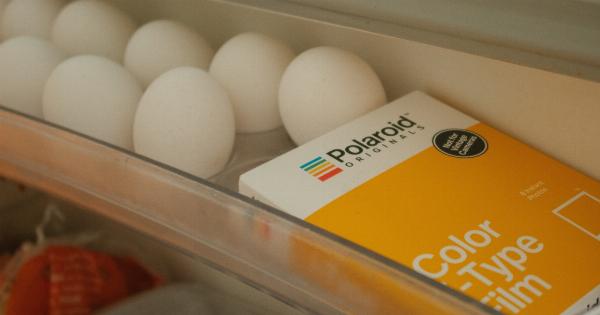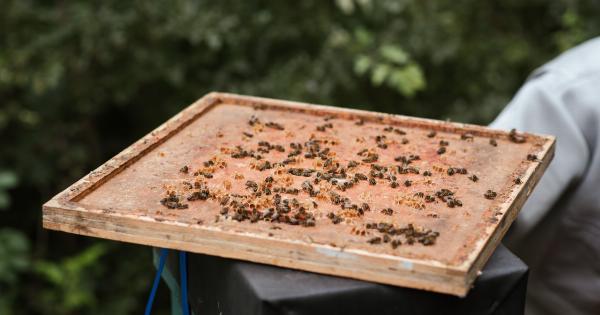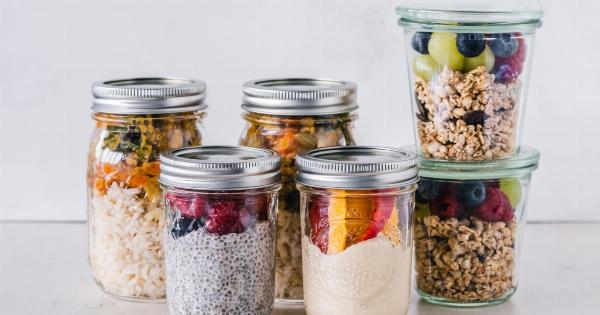Storing food in the refrigerator is a common practice in our daily lives. It helps in preserving the freshness and quality of our food. However, if not done properly, it can lead to health hazards.
Bacterial growth and contamination are major concerns when it comes to storing food in the fridge. In this article, we will discuss some essential tips on how to avoid health hazards when storing your food in the fridge.
1. Proper Temperature Settings
The temperature of your refrigerator plays a crucial role in maintaining the quality and safety of your stored food. It is recommended to set your fridge between 35-40 degrees Fahrenheit (1-4 degrees Celsius).
This temperature range inhibits the growth of most bacteria, ensuring your food stays safe and fresh for a longer duration.
2. Use A Thermometer
Investing in a refrigerator thermometer is a wise step towards maintaining proper temperature control. This small device can be placed inside your fridge to monitor the accurate temperature.
It alerts you if the temperature exceeds the safe range, allowing you to take immediate action to prevent any potential health hazards.
3. Proper Food Organization
The way you organize your food inside the refrigerator can impact its longevity and safety. Here are some tips to consider:.
A. Keep raw meat, poultry, and seafood in sealed containers or plastic bags on the lowest shelf or in a dedicated drawer. This prevents any drippings from contaminating other food items.
B. Place dairy products, eggs, and other perishable items on the middle shelves. These items are less likely to spoil quickly if stored at a consistent temperature.
C. Store fruits and vegetables in separate crisper drawers with appropriate humidity levels to maintain their freshness and prevent cross-contamination.
Dividing and organizing your food in this manner not only keeps your fridge organized but also reduces the chances of cross-contamination and foodborne illnesses.
4. Wrap or Cover Food Properly
When storing leftovers or any food items in the refrigerator, it is essential to wrap or cover them properly. This prevents the food from drying out and minimizes the risk of cross-contamination. Here are some guidelines:.
A. Use airtight containers for leftovers to maintain their freshness and prevent them from absorbing any odors from other foods.
B. Wrap raw meat, poultry, and seafood tightly in plastic wrap or place them in sealed plastic bags to avoid any leakages.
C. For cut fruits and vegetables, it is advisable to use cling wrap or keep them in sealed containers to retain their moisture and prevent them from becoming limp or wilted.
D. Cover open jars, bottles, or cans with plastic wrap or transfer the contents to airtight containers. This helps to preserve their flavor and prevents them from picking up any strong odors from other foods.
5. Check for Expiration Dates
Regularly check the expiration dates of food items in your refrigerator. Discard any items that have passed their expiration date, as they may pose a risk to your health.
This practice ensures that you consume only fresh and safe food, reducing the chances of food poisoning or foodborne illnesses.
6. Regular Cleaning and Maintenance
To maintain a safe and healthy environment in your refrigerator, it is crucial to perform regular cleaning and maintenance. Here are some cleaning and maintenance tips:.
A. Clean spills or leaks immediately to prevent bacteria growth and cross-contamination within the fridge.
B. Wipe down the shelves, drawers, and walls of your refrigerator regularly with mild soapy water or a solution of white vinegar and water to eliminate any lingering germs or odors.
C. Defrost your freezer regularly to prevent ice buildup, which can lead to reduced efficiency and potential contamination of stored food.
D. Replace worn-out gaskets or seals on the refrigerator doors to maintain proper insulation and prevent temperature fluctuations.
7. Avoid Overcrowding
While it may be tempting to cram as much food as possible into your refrigerator, overcrowding can hinder proper air circulation and temperature control. It is essential to leave enough space between items for the cold air to circulate effectively.
This helps in maintaining a consistent temperature and prevents bacterial growth.
8. Be Mindful of Fridge Placement
Where you place your refrigerator can also impact its performance and the quality of the stored food. Consider the following:.
A. Keep your fridge away from heat sources such as direct sunlight, ovens, or dishwashers. Excessive heat can increase the internal temperature of the refrigerator, compromising the quality and safety of your food.
B. Ensure proper ventilation around the refrigerator by leaving sufficient space between the appliance and the surrounding walls or furniture. This allows heat to dissipate and keeps the fridge running efficiently.
9. Regularly Rotate Food
Take the “first in, first out” approach when it comes to using stored food from your refrigerator. Regularly check the dates and rotate the food items, placing the oldest items upfront and the newer ones towards the back.
This practice helps in reducing food waste and ensures you consume the items before they expire.
10. Practice Hygiene and Hand Washing
Proper hygiene and hand washing are essential when it comes to handling food, even while storing it in the refrigerator. Follow these hygiene practices:.
A. Wash your hands thoroughly with soap and water before handling any food items, especially when storing leftovers or raw meat.
B. Use clean utensils and cutting boards to avoid cross-contamination between different food items.
C. Avoid touching your face, hair, or other surfaces while handling food to prevent the transfer of any harmful bacteria or pathogens.
By incorporating these tips into your daily routine, you can significantly reduce the risk of health hazards associated with storing food in the refrigerator.





























